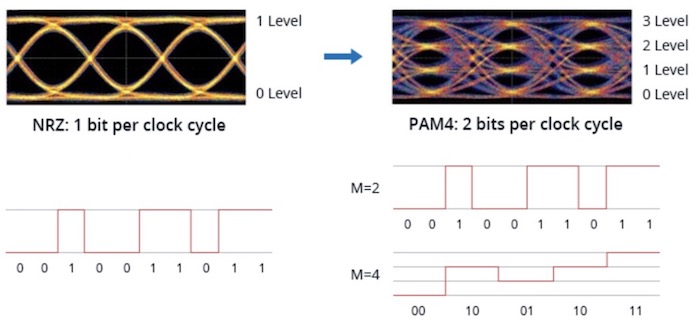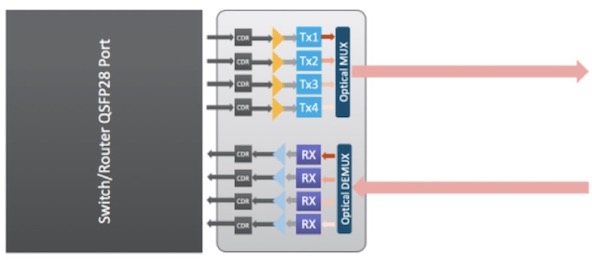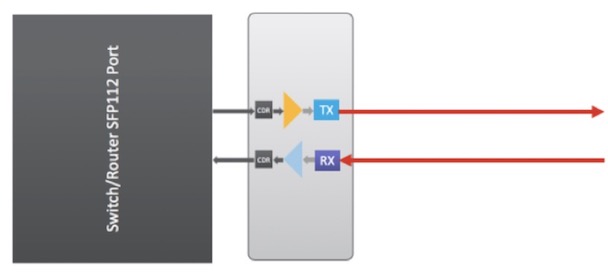
1. What’s the difference between 100G QSFP28 Single Lambda Transceiver Module with traditional QSFP28 SR4, LR4, CWDM4 Modules?
Normal QSFP28 CWDM4, LR4 modules is NRZ (non-return to zero), which is two-level binary modulation format. QSFP28 Single Lambda Transceiver is use PAM4 (four-level pulse amplitude modulation). PAM4 contains twice the amount of data than NRZ which increase network bandwidth without adding additional fibers, effectively improve bandwidth utilization. So there won’t be any need for 4x25G-to-100G conversion because both the electrical interface and the optical signal will be single-lane 100G.

The “4” in “LR4” “CWDM4” was there because it has four wavelength channels, each 25G, using multiplex and de-multiplex way to transmit 4 parallel optical channels signals. While Single Lambda only have 1310nm one wavelength, uses 50GBaud PAM4 signal to achieve data rate of 100Gbps.


2. What’s the advantage of Single Lambda QSFP28?
Cost saving and easier for massive production, traditional SR4, LR4, CWDM4 use CDR at both transmitter and receiver lane. Also use TIA + Linear Amplifier (LA) & PIN photodiode for all electrical lanes at the receiver side and Laser Driver (LD) & Laser at the transmitter side. 100G Single Lambda optics only use only a DSP with CDR at transmitter and receiver side. It reduce components used and overall complexity.
Forward compatibility with future SFP112 and 400G QSFP-DD optic modules. It prevents your existing QSFP28 modules from becoming obsolete if future add new SFP112-based hardware. 400G QSFP-DD uses 50GBaud PAM4 lines to achieve an aggregate data-rate of 400G. 100G single-lambda optics also use PAM4 signal which will easier for forward compatible with 400G QSFP-DD.
3. Single Lambda QSFP28 Products
100G QSFP28 Single Lambda Optical transceiver module are designed for use in 100 Gigabit Ethernet links over single mode fiber. They are operating on 1310nm wavelength, compliant with the QSFP28 MSA, IEEE 802.3bm and IEEE 802.3cd. Digital diagnostics functions are available via the I2C interface.
Detail 3 product models:
QSFP28 DR1: Singlemode 1310nm 500m LC DDM
QSFP28 FR1: Singlemode 1310nm 2km LC DDM
QSFP28 LR1: Singlemode 1310nm 10km LC DDM